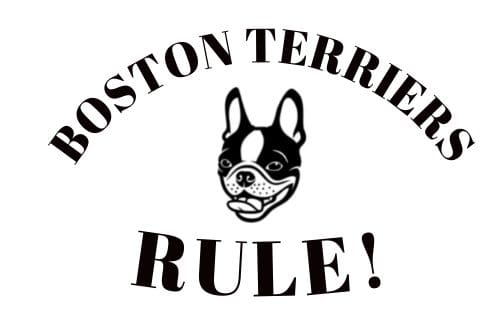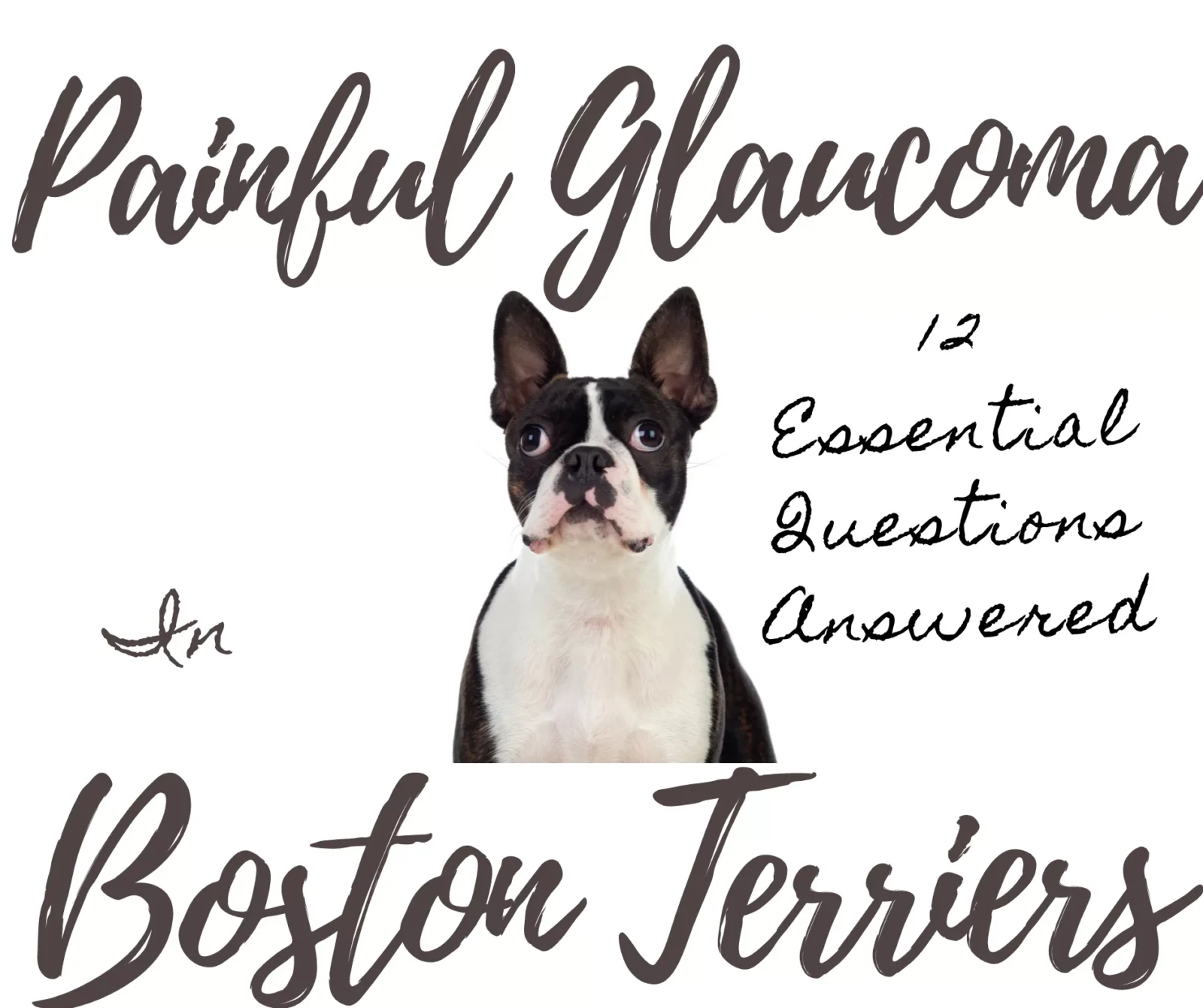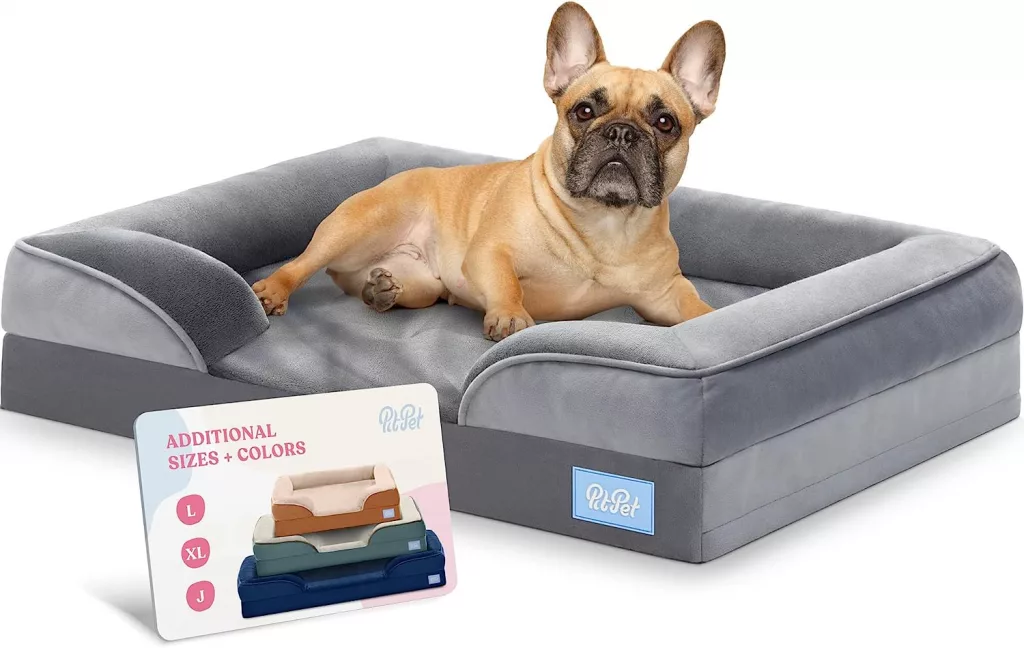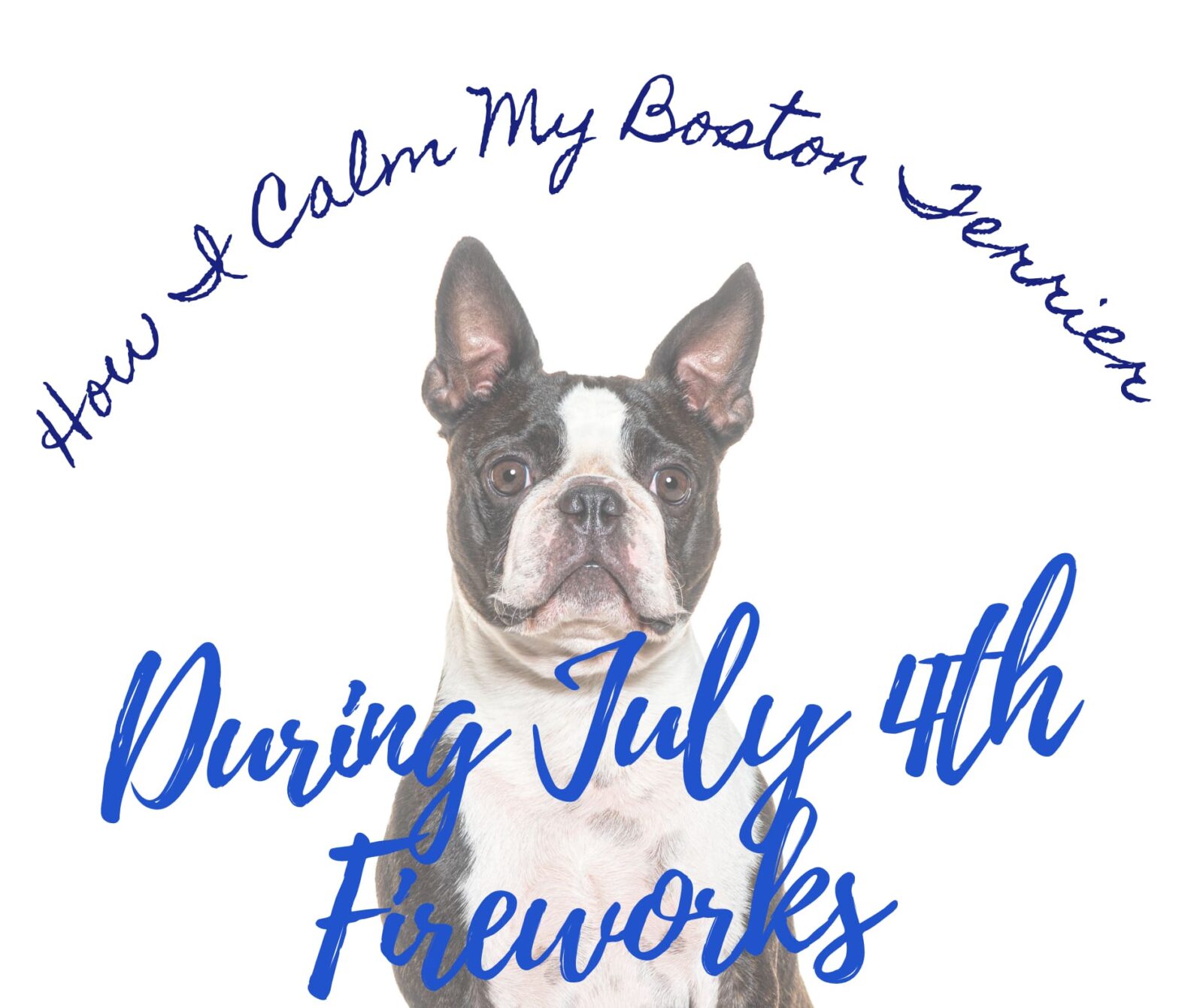Understanding Glaucoma in Boston Terriers: Causes, Signs, and Management
Glaucoma, a term often heard but not always understood, is a serious eye condition that affects various dog breeds, including Boston Terriers. This blog post discusses glaucoma, its causes, prevention, symptoms, and treatment, particularly in the context of Boston Terriers. If you’d like to learn more about Boston Terrier eye health, click here.

1. What Exactly is Glaucoma?
Glaucoma is a condition characterized by increased pressure within the eye, causing damage to the optic nerve and potentially leading to vision loss. The pressure increase typically occurs due to a buildup of fluid, known as aqueous humor, in the eye. The eye continually produces this fluid, and when its drainage system becomes compromised, the fluid accumulates, elevating the pressure inside the eye.

2. Can Glaucoma be Prevented?
Unfortunately, glaucoma cannot be entirely prevented, especially in breeds predisposed to the condition. However, early detection and prompt treatment can significantly slow down its progression and preserve your dog’s vision.

3. What is Sudden Onset Glaucoma?
Sudden onset glaucoma refers to the rapid development of high intraocular pressure within a short period. This sudden increase in pressure can cause severe pain, and immediate medical attention is crucial to alleviate discomfort and prevent further damage to the eye.

4. Is Glaucoma Common in Boston Terriers?
Boston Terriers are among the dog breeds prone to glaucoma. The disease is relatively common in this breed, highlighting the importance of regular eye examinations for early detection and intervention.
5. At What Age do Most Boston Terriers Get Glaucoma?
While glaucoma can occur at any age, Boston Terriers tend to develop glaucoma as they age, with senior dogs being more susceptible. However, it’s essential to note that glaucoma can manifest at any stage of a Boston Terrier’s life.
6. What Causes Glaucoma in Boston Terriers?
The primary cause of glaucoma in Boston Terriers, as in many other breeds, is a dysfunction in the eye’s drainage system. The inadequate drainage of aqueous humor leads to a buildup of pressure within the eye, causing the symptoms associated with glaucoma.
7. How Do I Know if My Dog Has Glaucoma?
Identifying glaucoma in your Boston Terrier requires attentive observation. Common signs of glaucoma include excessive tearing, redness in the eye, cloudiness, squinting, sensitivity to light, a bulging eye, and changes in behavior such as reluctance to play or eat due to the associated pain.
To effectively identify glaucoma in your Boston Terrier, it’s essential to be observant and recognize the signs that may indicate a problem with their eyes. One of the most noticeable signs is excessive tearing or discharge from the eye. If you notice that your Boston Terrier’s eye is constantly moist or has a discharge that is more than usual, it could be an indication of an underlying eye issue.
Redness in the eye is another common sign. If you observe that the whites of your dog’s eye appear redder than usual or if the blood vessels in the eye are more pronounced, this could suggest increased pressure in the eye, a hallmark of glaucoma. The eye might also appear cloudy or hazy, indicating the presence of excess fluid and pressure.
Squinting and sensitivity to light are discomfort indicators that dogs with glaucoma often display. Your Boston Terrier may squint or close its eye partially to try and alleviate the pain caused by the increased pressure. Additionally, sensitivity to light, known as photophobia, can make your dog shy away from bright lights or sunlight.
A bulging eye is a more advanced sign of glaucoma and should be treated as an urgent issue. If you notice one or both of your Boston Terrier’s eyes protruding or bulging out, it’s critical to seek immediate veterinary attention. This signifies a severe case of glaucoma with increased pressure causing the eye to bulge unnaturally.
Lastly, changes in behavior, such as a reluctance to play, eat, or engage in regular activities, can be indicators of eye pain and discomfort associated with glaucoma. Your dog might be avoiding these activities due to the pain they experience when trying to focus or move their eyes.
In summary, attentive observation of your Boston Terrier’s eyes is crucial. If you notice any of these signs, it’s important to consult your veterinarian promptly for a comprehensive eye examination and further diagnostics to determine if glaucoma or any other eye condition is affecting your furry companion. Early detection and timely treatment are key to managing and preserving your dog’s vision and overall well-being.

8. What Can I Do if My Dog Has Glaucoma?
If you suspect that your Boston Terrier has glaucoma, seeking immediate veterinary care is crucial. The vet will perform a comprehensive eye examination and may conduct tests to measure intraocular pressure and assess the overall eye health. Early diagnosis allows for timely treatment, potentially preventing further vision loss.
9. Are There Stages of Glaucoma?
Yes, there are different stages or grades of glaucoma, ranging from early to advanced. The severity of glaucoma is typically determined by the degree of intraocular pressure and the extent of optic nerve damage.
Glaucoma, a complex eye condition, manifests in various stages or grades, each representing a different level of severity and progression of the disease. Understanding these stages is vital for both veterinarians and dog owners to effectively manage and treat it in Boston Terriers or any other breed. The grading system helps categorize glaucoma based on intraocular pressure levels and optic nerve damage, allowing for a more targeted and appropriate approach to treatment.
In the early stages of glaucoma, intraocular pressure starts to rise, but the damage to the optic nerve is minimal. At this point, the symptoms may not be very pronounced, making early detection challenging without regular eye examinations.
As it advances to the intermediate stages, intraocular pressure continues to increase, and the optic nerve sustains more significant damage. These stages can be crucial points for intervention and treatment to prevent further deterioration and maintain vision.
Moderate stages of glaucoma present a more pronounced increase in intraocular pressure, accompanied by notable optic nerve damage. At this point, symptoms become more apparent, and the affected eye may show visible signs of discomfort and impaired vision. Timely and appropriate treatment is critical to slowing the progression and minimizing the adverse effects on the eye and the dog’s overall quality of life.
In the advanced or severe stages, intraocular pressure reaches dangerously high levels, causing significant damage to the optic nerve and often resulting in irreversible vision loss. The affected eye may be visibly enlarged and painful, causing severe discomfort to the dog. While treatment can still provide some relief and manage pain, the focus shifts to preserving the dog’s comfort and preventing further suffering.
Grading based on these stages helps guide the treatment plan, determining whether medical management, surgical intervention, or a combination of both is necessary. It also assists in communicating the prognosis to the dog owner, allowing them to make informed decisions about their pet’s eye care.
Regular veterinary check-ups and proactive monitoring of your Boston Terrier’s eyes are crucial in identifying and addressing it in its early stages, potentially improving the prognosis and preserving your dog’s vision and well-being.
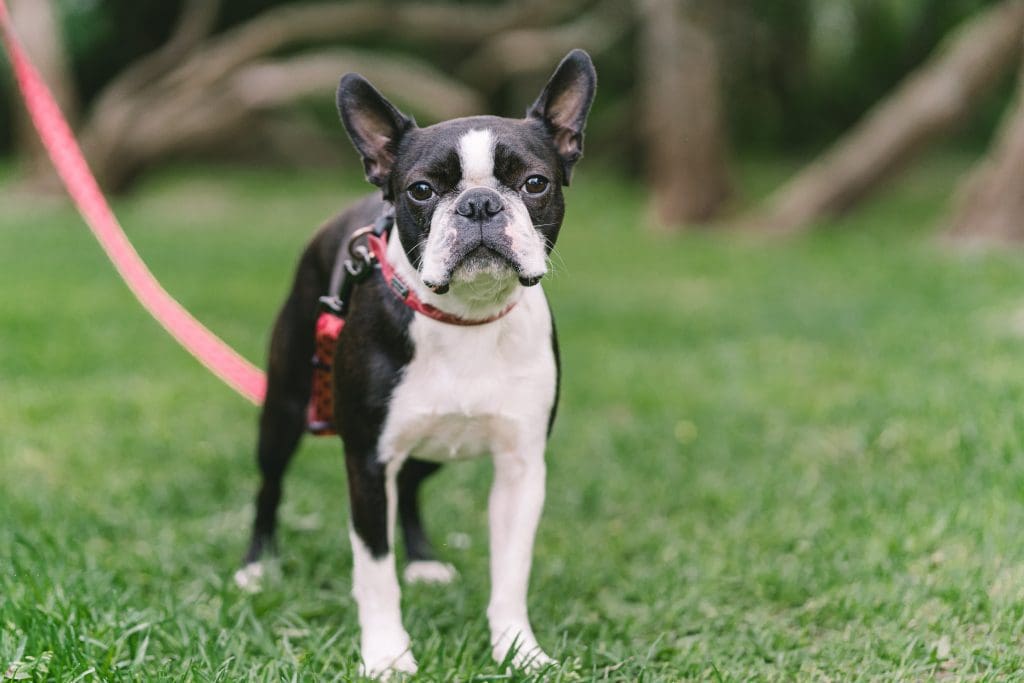
10. What Are the Treatment Options?
The treatment for glaucoma aims to reduce intraocular pressure, alleviate pain, and maintain vision. Treatment options may include eye drops to manage pressure, oral medications, surgery to improve drainage, or a combination of these approaches. The chosen treatment will depend on the severity of the condition and your veterinarian’s recommendations.
Addressing the condition involves a multifaceted approach to mitigate pressure within the eye, alleviate discomfort, and preserve visual function. The objective is to strike a balance between reducing pressure and enhancing drainage mechanisms.
Treatment options encompass a range of strategies, such as employing specialized eye drops engineered to regulate pressure, administering oral medications to control the condition systemically, or considering surgical interventions to optimize the drainage of fluids. Often, a tailored treatment plan combining multiple modalities is devised, personalized based on the specific gravity of the situation, following a thorough assessment and consultation with a veterinary specialist.
Medicated Eye Drops:
One primary avenue of treatment involves the careful administration of medicated eye drops. These specialized drops play a pivotal role in regulating the pressure within the eye, offering relief from the mounting tension. Additionally, they work to enhance the drainage of excess fluid, effectively managing the condition.
Oral Medications
In more complex cases or those that require a broader systemic impact, oral medications may be employed. These medications work within the body to help control the overall pressure and can complement the effects of the localized eye drops, providing a more comprehensive approach to treatment.
Surgery
In certain scenarios, surgical intervention becomes an essential component of the treatment strategy. The surgical procedures primarily aim at optimizing the drainage pathways within the eye to facilitate the smoother flow of fluids and thereby reduce pressure.
These interventions can range from intricate operations to shunt implantations, each tailored to the specific needs and condition of the affected eye. The chosen treatment path is carefully charted based on the unique circumstances of the case, guided by the severity of the ailment, and aligned with the expert recommendations of the veterinarian overseeing the dog’s care.
In conclusion, the treatment approach for this condition is a thorough and strategic combination of specialized eye drops, systemic oral medications, and, when necessary, precise surgical interventions. The ultimate goal is to provide effective pressure management, alleviate pain, and strive to maintain visual capacity for the affected individual.
Through a well-coordinated and comprehensive treatment plan, overseen by veterinary professionals, the best possible outcome can be pursued for the well-being and comfort of the canine companion.

11. What is End Stage Glaucoma in Dogs?
End stage glaucoma is the advanced and irreversible stage of the disease where the eye has suffered extensive damage, leading to complete loss of vision. At this point, the focus shifts to providing palliative care to manage pain and discomfort.
End stage glaucoma in dogs marks a critical juncture where the disease has progressed to its most advanced and irreversible state, resulting in severe ocular damage and complete vision loss. The optic nerve, crucial for transmitting visual signals to the brain, is significantly compromised, rendering any attempts at vision restoration futile.
The affected eye is typically painful, and managing this pain becomes a primary concern. The focus of care shifts from attempting to salvage vision to providing palliative support, aiming to enhance the dog’s quality of life by alleviating pain and discomfort.
Veterinarians may prescribe pain relief medications and recommend various supportive measures to enhance the dog’s comfort, all while acknowledging that complete vision restoration is no longer a viable goal. Family and pet owners play a crucial role during this stage, offering love, care, and support to ensure their pup’s well-being and comfort in their journey through this challenging phase.

12. What Products Help Dogs with Glaucoma?
Several products can aid dogs with glaucoma. These include specialized eye drops to reduce intraocular pressure, supportive supplements to maintain eye health, protective eyewear to shield the eyes from further damage, and therapeutic beds to provide a comfortable resting place during recovery.
Opula Dog Eye Chews are meticulously crafted to prioritize your pet’s eye health, ensuring they lead a comfortable and vibrant life. Uncomfortable and dry eyes can significantly impact a pet’s well-being, and our vision bites step in as a reliable supplement, providing comprehensive daily eye care and preventing unsightly tear stains.
Enriched with a powerful blend of multivitamins, astaxanthin, and lutein, our pet eye supplements boast a potent dose of antioxidants. These essential elements actively promote and maintain healthy eye function, combat eye aging, and enhance vision, leaving your furry companion’s eyes sparkling and clear.
Nurtured with a range of vital nutrients, including Omega-3 EPA and DHA from cod liver oil, our dog vision supplements offer superior support for retinal and lens health, reducing eye fatigue. Packed with a generous dose of vitamins C, E, A, D3, and beta carotene, these chews bolster eye health and immune function, ensuring your pets stay at their healthiest and most active.
The scientifically formulated chews are designed to replenish essential eye health ingredients while providing a tasty, enjoyable snack. Tailored to cater to the nutritional needs of your pets, these chews actively promote optimal eye health and immune function, contributing to their overall vitality and well-being. Particularly beneficial for maintaining optimal vision in senior pets, these chews are easy to chew and deliver a delightful chicken flavor that your dogs will love.
NAMSAN Dog Goggles Medium UV Protection
I have suggested these “doggles” many times throughout this blog. These are great eye protection for Boston Terriers brachycephalic, soft ball sized heads, due to the great adjustable fit, how they bend in the middle, as well as the tinted lens. Like a pair of protective sunglasses…
Designed with your dog’s eye safety in mind, our dog sunglasses adhere to UV rate standards, boasting UV-resistant and anti-glare lenses. The translucent gray lens provides a clear field of vision, while frame vents effectively disperse fog, enhancing safety and comfort for your pet.
These wide goggles are thoughtfully designed to securely stay on your dog’s head without causing any discomfort. They effectively prevent droplets, dust, and small stones from entering your pup’s eyes, making them perfect for car rides or various outdoor activities like running, skiing, and traveling.
With dimensions measuring at Length: 5.5″, Height: 1.6″, and adjustable elastic straps (Head: 14.5″-19.5″, Chin: 7″-10.5″), these goggles can be customized to fit your dog comfortably. The flexibility of the goggles allows for easy adjustments to match your dog’s head shape, ensuring a snug and secure fit without hurting their eyes.
NAMSAN Medium Dog Goggles are the epitome of eye protection for your beloved pet, ensuring they experience the world safely and comfortably. Invest in their eye health and outdoor adventures with our top-notch dog goggles!
A comfortable orthopedic bed is a must for a dog suffering from glaucoma. It’s imperative they have a soft place to rest when the pain gets too much. This bed is reasonable in price and can accommodate both stretchers and leaner sleep styles as well as being great for senior dogs.
This Orthopedic Dog Bed, designed for ultimate canine comfort and support. Crafted with firm egg crate foam, this bed ensures even weight distribution, soothing your dog’s joints and pressure points. The elevated cushion provides essential back and neck support, promoting a comfortable rest experience.
This plush pet bed features a soft velvet exterior and a cushioned flannel top, inviting your dog to sink into blissful slumber. Its nonslip bottom ensures stability and security for your furry companion. Additionally, the bed is equipped with waterproof protection, thanks to the TPU liner safeguarding the foam from accidents and spills. Maintenance is a breeze with the easily removable, zippered cover that is machine washable.
Perfect for puppies or senior pets, this dog bed offers a cozy alternative to the cold floor, especially for dogs that enjoy stretching out.
Crafted from supremely tough oxford, this bed is indestructible, ensuring durability and longevity even with daily use by your beloved pet. Give your furry friend the gift of a good night’s sleep and unmatched comfort with this Orthopedic Dog Bed.

Conclusion
In conclusion, glaucoma is a concerning condition that can affect Boston Terriers and impact their quality of life. Early detection, timely intervention, and appropriate care can significantly enhance the prognosis for dogs with glaucoma. Regular check-ups with your veterinarian and proactive monitoring of your Boston Terrier’s eye health are essential steps in managing this condition effectively.

https://pubmed.ncbi.nlm.nih.gov/28776921/
This post contains affiliate links. I earn from qualifying Amazon purchases.
